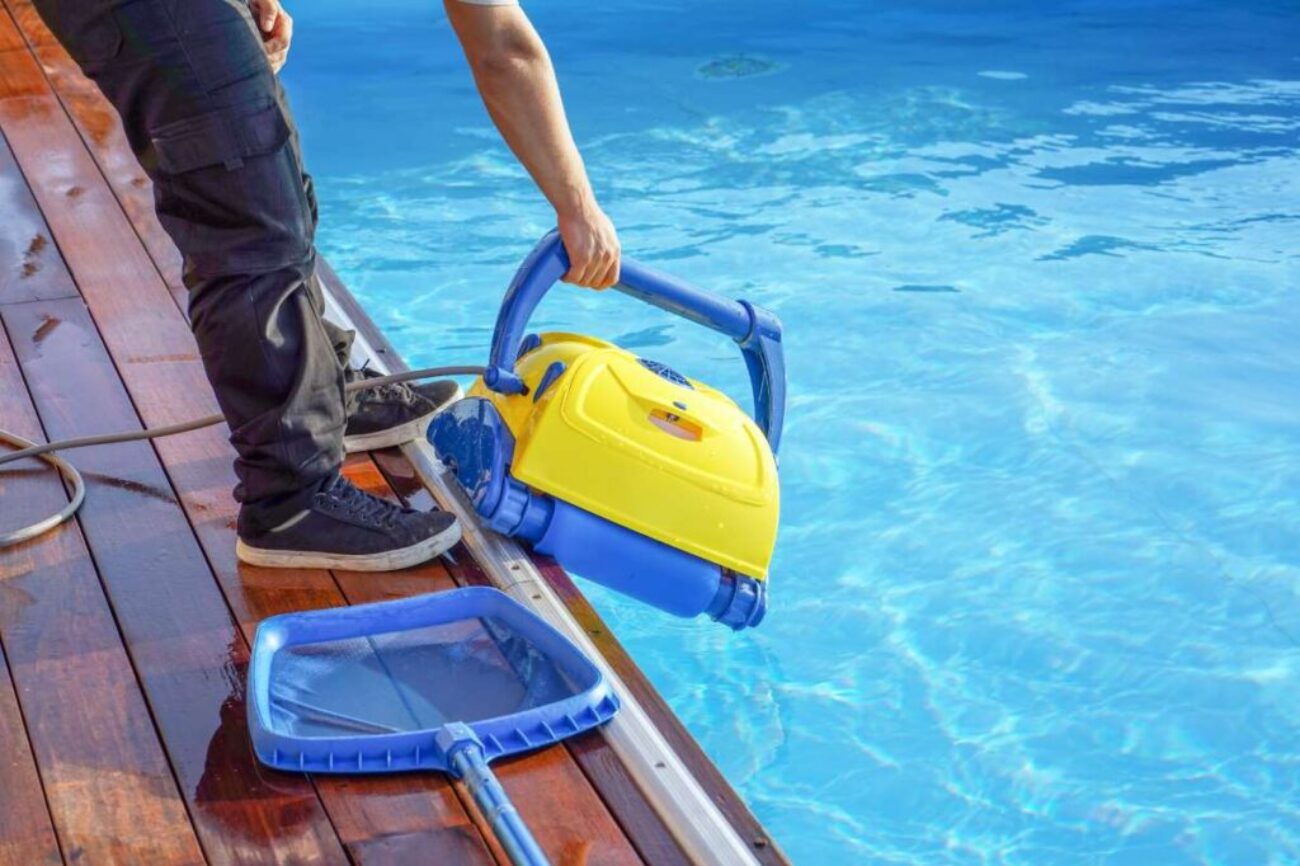Improve your pool team’s performance by setting clear benchmarks. Learn how to establish effective performance metrics and enhance team productivity!
Setting Performance Benchmarks for Your Pool Team
Establishing performance benchmarks is essential for any pool team striving for excellence. By setting clear and measurable goals, teams can enhance productivity, improve service quality, and ultimately drive business growth. In this blog post, we will delve into the significance of performance benchmarks, how to set them effectively, and the best practices for monitoring and achieving these goals. Whether you are managing a pool service business or part of a competitive pool team, these strategies will empower you to optimize performance and achieve outstanding results.
Introduction
In the competitive landscape of pool service businesses, performance benchmarks serve as critical indicators of success. These benchmarks not only set the standard for what is deemed acceptable performance but also inspire teams to reach new heights. As pool maintenance becomes increasingly complex, the need to evaluate performance through defined metrics becomes paramount. This article will explore how to establish effective performance benchmarks for your pool team, the various aspects you should consider, and strategies for monitoring these benchmarks to ensure continuous improvement.
Understanding the Importance of Performance Benchmarks
Setting performance benchmarks is crucial for several reasons. First and foremost, benchmarks provide clear targets for teams to aim for. Without defined goals, team members may lack direction, leading to inconsistent performance and missed opportunities for growth. Additionally, performance benchmarks facilitate accountability. By establishing measurable goals, team members can take ownership of their responsibilities and evaluate their contributions to the team’s success.
Research shows that organizations that proactively set performance benchmarks are significantly more likely to exceed their goals. For example, a study conducted by the Association for Pool and Spa Professionals found that teams with established performance metrics improved their service delivery times by as much as 25%. This improvement not only enhances customer satisfaction but also can lead to increased revenue through repeat business and referrals.
Moreover, performance benchmarks foster healthy competition among team members, motivating them to strive for excellence. By comparing individual performance against established benchmarks, teams can identify strengths and areas for improvement, ultimately creating a culture of continuous learning and development.
Key Performance Indicators (KPIs) for Pool Teams
When setting performance benchmarks, it’s essential to identify the right Key Performance Indicators (KPIs) that align with your business objectives. KPIs can vary depending on the nature of your pool service but often include metrics such as customer satisfaction ratings, response times, completion rates, and revenue per service call. By focusing on these indicators, pool teams can gain valuable insights into their performance.
For instance, measuring customer satisfaction through surveys can offer critical feedback that directly impacts service quality. A pool service team in Florida, for example, implemented customer feedback forms to track satisfaction rates. They discovered that improving communication during service appointments significantly boosted their ratings, leading to increased customer retention and referrals.
In another case, a pool maintenance company in Texas adopted response time as a benchmark for their service calls. By setting a target response time of 24 hours, they managed to streamline their scheduling processes, resulting in reduced wait times for customers and a subsequent increase in service bookings.
Steps to Set Effective Performance Benchmarks
Setting effective performance benchmarks requires a systematic approach. Here are the steps to ensure that your benchmarks are meaningful and achievable:
- Identify Business Objectives: Begin by defining your overall business objectives. What are you trying to achieve? Increased revenue, enhanced customer satisfaction, or improved team collaboration? Your benchmarks should align with these goals.
- Select Relevant KPIs: Choose KPIs that directly correlate with your objectives. For example, if your goal is to improve customer satisfaction, consider metrics such as net promoter score (NPS) or customer retention rates.
- Establish Baselines: Before setting targets, analyze historical data to determine baseline performance levels. Understanding where you currently stand will help in setting realistic and attainable benchmarks.
- Set SMART Goals: Ensure that your benchmarks are SMART—Specific, Measurable, Achievable, Relevant, and Time-bound. For instance, instead of setting a vague goal of “improving customer service,” specify “achieve a customer satisfaction rating of 90% within the next quarter.”
- Communicate Expectations: Clearly communicate your benchmarks to the team. Make sure every member understands their role in achieving these goals and how their performance will be evaluated.
- Monitor and Adjust: Regularly review performance against benchmarks. If a particular benchmark proves to be too ambitious or too easy, adjust it accordingly. Flexibility is key in ensuring that your benchmarks remain relevant.
The Role of Technology in Tracking Performance
In today’s digital age, leveraging technology can significantly enhance your ability to track and analyze performance benchmarks. Numerous tools and software solutions are available that can simplify monitoring efforts, providing real-time data on various KPIs.
For instance, customer relationship management (CRM) software can help track customer interactions and satisfaction levels, while project management tools can streamline task assignments and monitor team productivity. By utilizing these tools, pool service businesses can gain valuable insights into their operational efficiency, allowing for data-driven decision-making.
Moreover, investing in mobile applications for your team can facilitate faster communication and updates on service calls. These applications enable technicians to report their progress, capture customer feedback, and ensure that all necessary information is readily available, ultimately improving response times and service quality.
Encouraging Team Engagement and Accountability
One of the critical aspects of successfully implementing performance benchmarks is ensuring that your team is engaged and accountable. Engaging your team in the process of setting benchmarks can foster a sense of ownership and commitment to achieving the goals. Involve team members in discussions about what metrics matter most and seek their input on how to improve performance.
Furthermore, recognizing and rewarding achievements can motivate team members to strive for excellence. Celebrate milestones, no matter how small, to maintain enthusiasm and commitment toward achieving benchmarks. For example, consider implementing a rewards program that recognizes the top-performing team member each month based on established KPIs.
Accountability is equally important. Regular check-ins and performance reviews can help keep team members focused on their goals and provide an opportunity for constructive feedback. This open dialogue fosters a culture of transparency and encourages continuous improvement.
Best Practices for Continuous Improvement
Achieving performance benchmarks is only the beginning; maintaining and continuously improving performance is essential for long-term success. Here are some best practices to consider:
- Regular Training and Development: Invest in ongoing training programs to ensure your team is equipped with the skills and knowledge necessary to meet performance expectations. This could include workshops on customer service excellence or technical training on the latest pool maintenance technologies.
- Benchmarking Against Industry Standards: Stay informed about industry trends and standards by benchmarking your performance against competitors. This will help you identify gaps in your service delivery and areas for improvement.
- Soliciting Customer Feedback: Continuously seek feedback from customers to refine your services. Conduct surveys, engage with customers on social media, and encourage online reviews to gather insights into their experiences.
- Fostering a Culture of Innovation: Encourage team members to share ideas and suggestions for improving processes and service delivery. A culture of innovation can lead to new solutions that enhance performance.
- Setting New Goals: Once established benchmarks are consistently met, consider setting new, higher goals to challenge your team further. This encourages personal and professional growth among team members and prevents stagnation.
Conclusion
Setting performance benchmarks is a vital strategy for any pool team aiming for growth and excellence. By defining clear metrics, monitoring progress, and fostering a culture of accountability and continuous improvement, pool service businesses can enhance not only their performance but also their overall customer satisfaction.
The pool maintenance industry is thriving, and with the right tools and strategies, teams can leverage performance benchmarks to drive success. If you’re ready to take your pool service business to the next level, consider exploring pool routes for sale and discover how acquiring established routes can provide immediate income, an existing customer base, and opportunities for expansion.
Contact us today to learn more about how Tower Business Brokers can support your journey into pool route ownership and help you set and achieve performance benchmarks that lead to lasting success.



